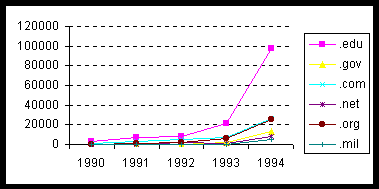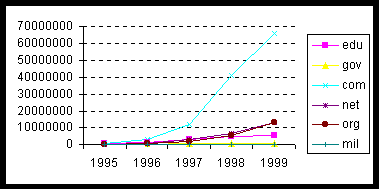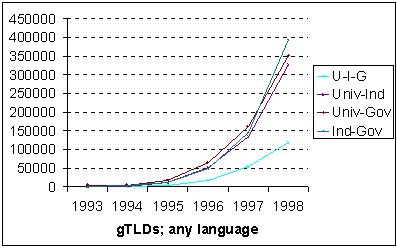
A Triple Helix of University-Industry-Government Relations
Loet Leydesdorff
Science & Technology Dynamics, University of Amsterdam
The Journal of Science & Health Policy, Vol. 1, No. 1 (2000), forthcoming.
University-industry-government relations increasingly provide the knowledge infrastructure of society. Public health systems, for example, are continuously reshaped by new scientific developments, by new products on the markets, and by new policies at regional, local, and national levels. This knowledge infrastructure is not static, but operates in terms of expectations. These expectations and their mutual exchange in communications (institutionalized or not) can be considered as a distributed overlay on top of the institutional divisions of labour. The underlying arrangements can then be assessed in terms of their functionality from different perspectives, and perhaps be reconstructed. The discussions, however, are updated without a priori synchronization. Yet, the patterns in these evolving communication systems can be studied both empirically and using simulations (Etzkowitz & Leydesdorff 1997; cf. Luhmann, 1984; Arthur, 1994).
The Triple Helix model denotes not only these changing relationships of university, industry, and government, but also internal transformation within each of these spheres. The university has been transformed from a teaching institution into one which combines teaching with research, a revolution that is still ongoing, not only in the U.S.A., but in many other countries. There is a tension between the two activities but nevertheless they co-exist in a more or less compatible relationship with each other because it has been found to be both more productive and cost effective to combine the two functions (Etzkowitz et al., 2000).
The driving force of the interactions can be specified as the expectation of profits. Yet, "profit" may mean different things to the various actors involved. A leading edge consumer, for example, provides firms and engineers with opportunities to perceive "reverse salients" (Hughes, 1983) in current product lines and software. Thus, opportunities for improvements and puzzle-solving trajectories can be defined.
The foundation of the model in terms of expectations leaves room for uncertainties and chance processes. The institutional carriers are expected to be reproduced as far as they have been functional hitherto, but the negotiations may lead to experiments which can thereafter also be institutionalized. Successful innovation changes the landscape, that is, the opportunity structure for the institutional actors involved. Structural changes in turn are expected to change the dynamics. The expansion of the higher-education and academic research sector during the 20th century, for example, has provided society with a realm in which different representations can be entertained and recombined in a systematic manner. A laboratory of knowledge-intensive developments is socially available and can be improved upon.
The (neo-evolutionary) model also explains why the tensions need not
to be resolved. A resolution would hinder the dynamics of a system which
lives from the perturbations and interactions among its subsystems. Thus,
the subsystems are expected to be reproduced. The global system is neither
integrated nor completely differentiated, but it performs on the edges
of fractional differentiations and local integrations. Using this model,
one can begin to understand why the global regime exhibits itself in progressive
instances, while the local instances inform us about global developments
in terms of the exceptions which are replicated and built upon.
Lock-in and break-out
The Triple Helix of University-Industry-Government Relations has been elaborated into an evolutionary model in a series of workshops, conferences, and special issues during the second half of the 1990s (Leydesdorff & Etzkowitz, 1996 and 1998). Among other things, the model implies that two of the three helices may "lock-in" into a coevolution or "mutual shaping". This can happen intentionally or not. For example, a specific technology can lock-in with specific institutional arrangements, as in the case of the vaccins against polyomyelitis (Blume, 1998). A locked-in system can be expected to resist its replacement, for example, by becoming more active. It develops along a trajectory with a life-cycle. A technology can also lock-in with a market; the well-known example has been the QWERTY keyboard (David, 1985; Arthur, 1990 and 1994).
A lock-in may occur between any two of the three function systems and at different levels of aggregation. For example, between the state and the knowledge system like in large technological systems and in the public health systems (Nelson, 1994; McKelvey, 1997), or between the state and the economy like previously in the Soviet Union. When a lock-in occurs the third party is no longer in control of its own development, but locked-out and driven exogeneously.
For example, when new knowledge-based pharmaceuticals hit the market place and succeed, local governments cannot resist the pressure to include them into the health provision schemes. The lock-in then generates "technological determinism" and a degree of freedom is lost. It can be shown that superior technologies cannot break lock-ins (Leydesdorff & Van den Besselaar 1998; Leydesdorff, 2000a). The crux is the "creative destruction" of the network effects. For example, when the Internet replaces intermediates as institutional arrangements, one is sometimes able to open up a new market (Bruckner et al., 1994).
Emerging markets in new medical technologies are thus dependent on the breaking of locked-in arrangements. The latter can be based on patent rights, regulation, technological advancements, etc. When the third dynamics can be regained in a complex system, the system may enter an upswing of new applications, new technological fields or new interface arrangements. Three subdynamics have to be kept in the picture: the generation of sufficient variation by new technologies, the liberalization of markets in order to provide maximum incentives for diffusion, and the regulatory system that interplays with the markets and reshapes the relevant interfaces by providing rules and resources.
The traditional model of a political economy on top of a dynamic system
of university-industry relations can be replaced with a Triple Helix model
in which lock-ins can occur between each two of the three axes and where
the third axis can sometimes, that is, under specifiable conditions, provide
the new perspectives for further development given resistance among the
locked-in partnership relations. It can be shown that niche-management
is a crucial factor in the transformations as is human capital. The challenges
require changes in the operations more than in extending the borderlines.
The Endless Frontier has been replaced with an Endless Transition (Etkzowitz
& Leydesdorff, 1998)
The public health system
What does the Triple Helix model mean for medicine and public health systems? As a regulatory and interface system, health has been the subject of public regulation. One is inclined to approach the problems from the (semi-)governmental perspective of budget control. By taking a perspective, however, the policy maker generates one’s own blind spot since the other developments are defined as factors in the environment. Then, they are no longer analyzed as dynamic developments which are themselves engaged in fluid transitions. The institutionalization of constructed boundaries within and among the systems is no longer a legitimate subject of analysis.
The Triple Helix model proposes to shift this focus to processes of devolution. Where do the systems irritate one another? How does which system manage to develop interface organizations? Pharmaceutical industries, for example, have been very successful in incorporating R&D and thus retaining the synergy from the interaction between marketing, production, and the generation of new technologies within the company. Biotechnology has changed the picture by generating a direct interface between scientists and markets, thus allowing scientists to become entrepreneurs by creating small-sized companies. Sometimes these companies (based on venture capital) were later absorbed by large corporations who managed to embed the new dynamics in their existing routines (or not). Thus, the dynamics of university-industry relations were changed during the 1980s (e.g., Faulkner & Senker, 1994).
During the 1990s, the end of the Cold War changed the dynamics of government. Governance became a variable. For example, the European Union can be considered as experimenting with a set of arrangements balancing authorities between national governments and supra-national regulation (Leydesdorff, 2000b). The U.S.A. is less flexible in this respect given its constitutional framework as a single nation state. Yet, at sub-national levels, at the level of local interface organizations, etc., the American system is highly successful in inventing new forms of public-private collaborations, strategic alliances, etc., which provide options for the enrolment of new capital and new employment opportunities.
In the second half of the 1990s, the Internet has become a major player.
While the growth was originally academic, the dynamics have been increasingly
commercial during the second half of the 1990s (see Figure 1). Note the
difference in orders of magnitude between the two periods.

Figure 1a:
The development of generic Top Level Domains (gTLDs) on the Internet
during the first half of the 1990s
as measured using AltaVista (Dec.1999/Jan.2000)

Figure 1b:
The development of generic Top Level Domains (gTLDs) on the Internet
during the second half of the 1990s
as measured using AltaVista (Dec.1999/Jan.2000)
This communication revolution enables people to communicate across institutional and national boundaries more easily, but it generates also a fine-grained network of specific relations. Thus, the code in the communication, that is, the meaning attached to words (as in jargons) can become more important for the communication than local cultures. One is able to develop new codifications, supported by new institutions like workshops in emerging specialties, e-journals, etc., which can function as the niches for exploration which previously had to be installed in a laboratory. The model of innovation shifts from lab-based to "desktop" based (Kaghan & Barnett, 1997). Thus, the Internet tends to tilt the dynamics in favour of the level of knowledge-based expectations.

Figure 2:
Bilateral and trilateral relations between domains emerging on the
Internet
(using Boolean operators on search terms with AltaVista, December
1999)
The knowledge-base, that is, the quality of the expectations can always be improved by systematic research and theorizing. The "new economy" is based on a different configuration between the three dynamics of (i) knowledge-generation and innovation, (ii) diffusion and capitalization, and (iii) control and regulation. In principle, a scientist inventing a new drug (let's say against AIDS) at the lab bench could directly go to the Internet, and sell and ship millions of doses from an insulated country, thus potentially circumvening the regulation of the FDA. New interfaces and therefore emerging markets can be created over night. These new developments challenge the public institutions to adjust rules and regulations in order to cope with the new challenges. Intellectual property rights, for example, no longer focus exclusively on patents, but trade marks, copyrights (of software), etc., demand a much finer-grained framework for stimulative regulation.
The sociological paradigm of the Triple Helix arrangement supercedes
the biological metaphors: the systems do not develop as unities, but as
distributions of events. The distributions can be recognized reflexively
as containing an expected information value provided that the analyst is
able to communicate in terms of new (knowledgeable) distinctions and border
lines. The delineation of "a system" is based on a distinction per definition
and thus the definitions are with hindsight, and knowledge-based. They
will be contested as boundaries and these discursive dynamics drive the
various discourses into next updates. Disharmony can be expected to prevail;
integrations are local and remain suboptimal. Yet, differentiations may
lead to fragmentation and even crisis. The fragility of the development
is to be celebrated in order to acculturate the new options and in order
to retain the profits for a sustainable health system.
References:
Arthur, W. B. (1990). ‘Positive Feedbacks in the Economy,’ Scientific American, 80-5.
Arthur, W. Brian (1994). Increasing Returns and Path Dependence in the Economy. Ann Arbor: University of Michigan Press.
Blume, Stuart (1998). ‘Early Warning in the Light of Theories of Technological Change,’ Int. J. of Technology Assessment in Health Care, 14 (1998) 613.
Bruckner, Eberhard, Werner Ebeling, Miguel A. Jiménez Montaño and Andrea Scharnhorst (1994). Hyperselection and Innovation Described by a Stochastic Model of Technological Evolution, in: Loet Leydesdorff and Peter Van den Besselaar (Eds.), Evolutionary Economics and Chaos Theory: New Directions in Technology Studies (London and New York: Pinter), pp. 79-90.
David, P. A. (1985). ‘Clio and the Economics of QWERTY,’ American Economic Review 75, 332-7.
Etzkowitz, Henry, and Loet Leydesdorff (Eds.) (1997). Universities in the Global Knowledge Economy: A Triple Helix of University-Industry-Government Relations. London: Cassell Academic.
Etzkowitz, Henry, and Loet Leydesdorff (1998). ‘The Endless Transition: A "Triple Helix" of University-Industry-Government Relations,’ Minerva 36, 203-8.
Etzkowitz, Henry, Andrew Webster, Christiane Gebhardt, and Branca Terra (2000). ‘The Future of the University and the University of the Future: Evolution of Ivory Tower to Entrepreneurial Paradigm,’ Research Policy 29 (2), in print.
Faulkner, Wendy, and Jacqueline Senker (1994). Knowledge frontiers, public sector research and industrial innovation in biotechnology, engineering cermaics, and parallel computing (Oxford/New York: Clarendon Press).
Hughes, Thomas P. (1983). Networks of Power: Electrification in Western Society, 1880-1930 (Baltimore, etc.: Johns Hopkins University Press).
Kaghan, William and Gerald B. Barnett (1997). ‘The Desktop Model of Innovation in Digital Media,’ in: Henry Etzkowitz and Loet Leydesdorff (Eds.), Universities and the Global Knowledge Economy: A Triple Helix of University-Industry-Government Relations (London: Cassell Academicy) pp. 71-81.
Leydesdorff, Loet (1997). ‘A New Communications Regime of University-Industry-Government Relations,’ in: Henry Etzkowitz and Loet Leydesdorff (Eds.), Universities and the Global Knowledge Economy: A Triple Helix of University-Industry-Government Relations (London: Cassell Academic), pp. 106-117.
Leydesdorff, Loet (2000a). ‘The Triple Helix: An Evolutionary Model of Innovations,’ Research Policy 29 (2), in print.
Leydesdorff, Loet (2000b). ‘Are EU Networks Anticipatory Systems? An empirical and analytical approach,’ in: Daniel M. Dubois (Ed.), Computing Anticipatory Systems -- CASYS'99. Woodbury, NY: American Physics Institute.
Leydesdorff, Loet & Henry Etzkowitz (1996). Emergence of a Triple Helix of University-Industry-Government Relations, Science and Public Policy 23, pp. 279-86.
Leydesdorff, Loet, and Henry Etzkowitz (1998). ‘The Triple Helix as a model for innovation studies,’ Science and Public Policy 25 (3), 195-203.
Leydesdorff, Loet, and Peter Van den Besselaar (1998). ‘Competing Technologies: Lock-ins and Lock-outs,’ in: Daniel M. Dubois (Ed.), Computing Anticipatory Systems, Proceedings of the American Institute of Physics 437 (Woodbury, NY: American Institute of Physics), pp. 309-23.
Luhmann, Niklas (1984). Soziale Systeme. Grundriß einer allgemeinen Theorie (Frankfurt a. M.: Suhrkamp). [Social Systems (Stanford: Stanford University Press) 1995.]
McKelvey, Maureen D. (1997). ‘Emerging Environments in Biotechnology,’ in: Henry Etzkowitz & Loet Leydesdorff (Eds.), Universities and the Global Knowledge Economy: A Triple Helix of University-Industry-Government Relations. (London: Cassell Academic), pp. 60-70.
Nelson, Richard R. (1994). ‘Economic Growth via the Coevolution of Technology and Institutions,’ in: Loet Leydesdorff and Peter Van den Besselaar (Eds.), Evolutionary Economies and Chaos Theory: New directions in technology studies. (London: Pinter), pp. 21-32.